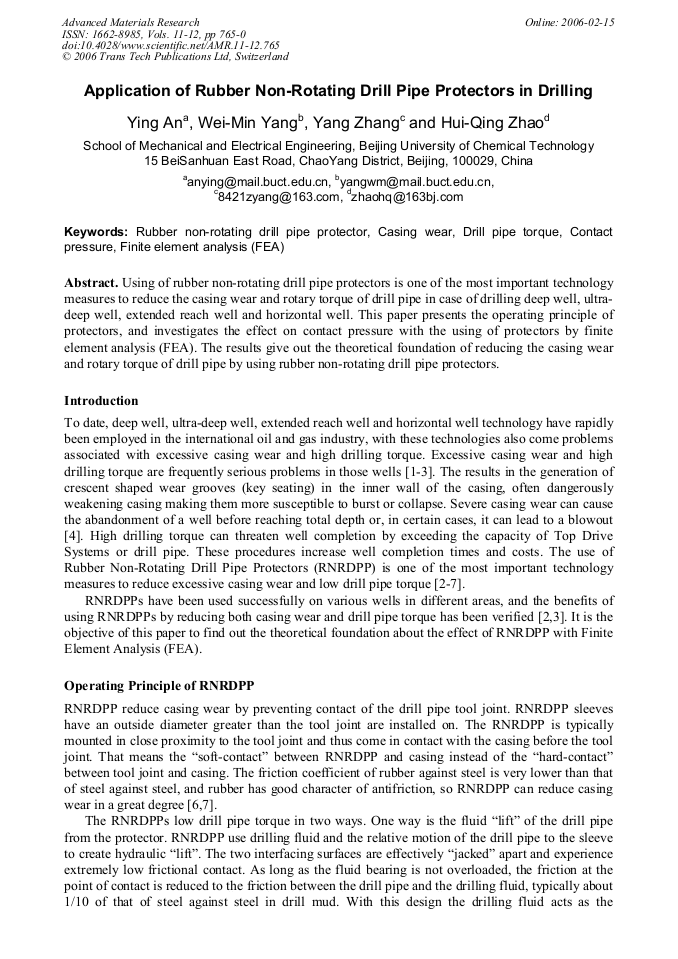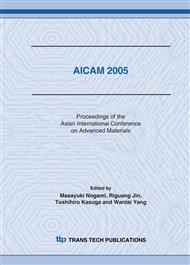p.733
p.737
p.741
p.745
p.749
p.753
p.757
p.761
p.765
Application of Rubber Non-Rotating Drill Pipe Protectors in Drilling
Abstract:
Using of rubber non-rotating drill pipe protectors is one of the most important technology measures to reduce the casing wear and rotary torque of drill pipe in case of drilling deep well, ultradeep well, extended reach well and horizontal well. This paper presents the operating principle of protectors, and investigates the effect on contact pressure with the using of protectors by finite element analysis (FEA). The results give out the theoretical foundation of reducing the casing wear and rotary torque of drill pipe by using rubber non-rotating drill pipe protectors.
Info:
Periodical:
Pages:
765-0
Citation:
Online since:
February 2006
Authors:
Price:
Сopyright:
© 2006 Trans Tech Publications Ltd. All Rights Reserved
Share:
Citation:


